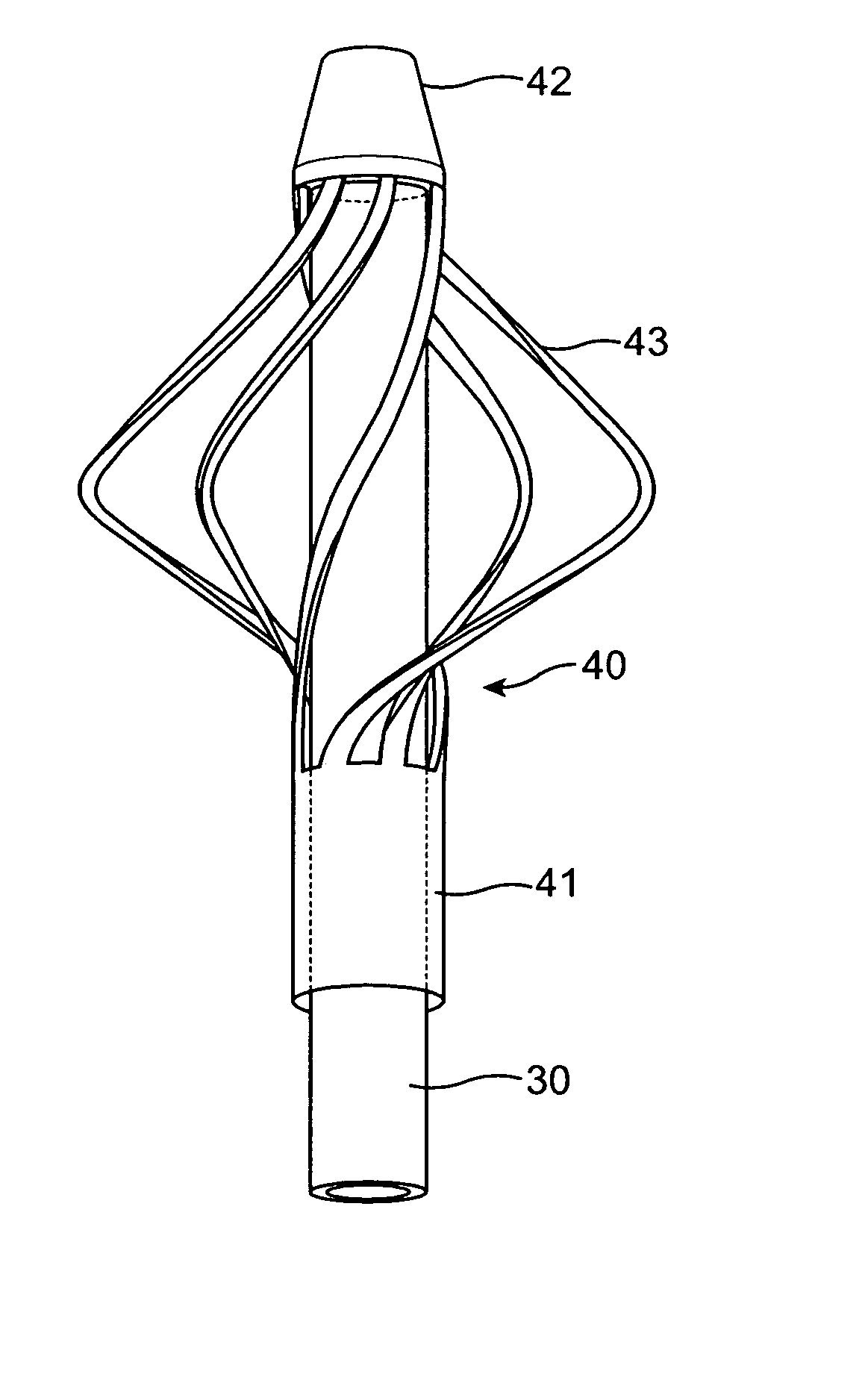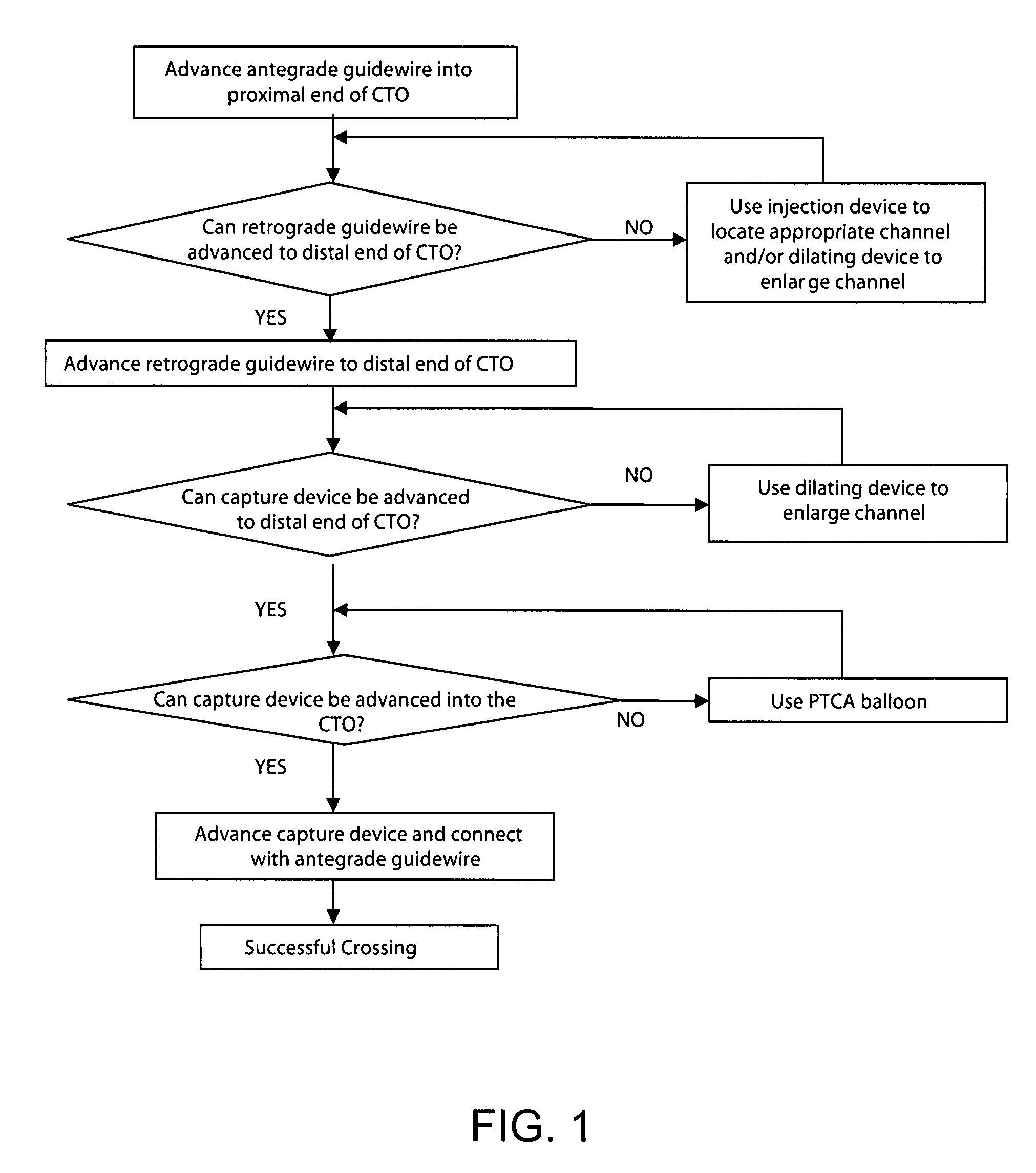Recanalizing occluded vessels using controlled antegrade and retrograde tracking
a technology of occluded vessels and tracking devices, applied in the field of catheters, can solve the problems of occlusions remaining one of the major challenges, no consensus on how best to solve them, and the complete blockage of a vessel cto is the problem of a large amount of occlusions, and the consensus is not clear
- Summary
- Abstract
- Description
- Claims
- Application Information
AI Technical Summary
Benefits of technology
Problems solved by technology
Method used
Image
Examples
example
Materials and Methods and Procedure Description
[0058] All patients enrolled were treated with the CART technique, either as the primary option or following a failed antegrade attempt with conventional or dedicated wires, during the same or prior procedure. Indication for CTO revascularization was either symptoms of angina or proven stress-induced ischemia. The duration of the occlusion was estimated from previous angiographic data or from clinical information (acute myocardial infarction or sudden change in angina pattern) or ECG changes consistent with the location of the occlusion.
[0059] The procedure was performed using the controlled antegrade and retrograde approach. As described earlier, the retrograde approach uses an intercoronary channel which can be either an epicardial channel, inter-atrial channel, an intra-septal channel (septal collateral), or a bypass graft. It is rather uncommon to find an epicardial intercoronary collateral that has a suitable morphology for use ...
PUM
 Login to View More
Login to View More Abstract
Description
Claims
Application Information
 Login to View More
Login to View More - R&D
- Intellectual Property
- Life Sciences
- Materials
- Tech Scout
- Unparalleled Data Quality
- Higher Quality Content
- 60% Fewer Hallucinations
Browse by: Latest US Patents, China's latest patents, Technical Efficacy Thesaurus, Application Domain, Technology Topic, Popular Technical Reports.
© 2025 PatSnap. All rights reserved.Legal|Privacy policy|Modern Slavery Act Transparency Statement|Sitemap|About US| Contact US: help@patsnap.com



